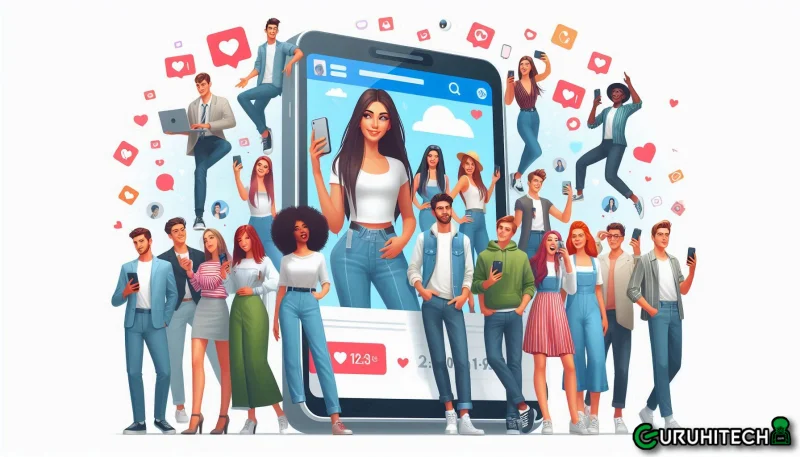The Rise of Nano and Micro-Influencers: Why Small is the New Big

In the ever-evolving world of influencer marketing, bigger isn’t always better. While mega-influencers and celebrities boast millions of followers, brands are increasingly turning to nano and micro-influencers for more targeted and impactful campaigns. These smaller-scale creators, with followings ranging from a few hundred to tens of thousands, are proving that influence isn’t just about numbers—it’s about connection and trust.
For brands looking to tap into this growing trend, partnering with experts like https://hypefactory.com/ can help identify the best nano and micro-influencers for tailored, high-performing campaigns.
Who Are Nano and Micro-Influencers?
- Nano-Influencers: Typically have 1,000 to 10,000 followers. These influencers often have a close-knit community where their recommendations feel personal and genuine.
- Micro-Influencers: Generally have 10,000 to 100,000 followers. They strike a balance between reach and engagement, making them highly effective for niche campaigns.
These influencers specialize in specific areas such as fitness, beauty, tech, or travel, giving brands direct access to highly engaged audiences within these niches.
Why Are Nano and Micro-Influencers So Effective?
- Higher Engagement Rates
Smaller audiences often mean more genuine relationships between influencers and their followers. Engagement rates for nano and micro-influencers can reach up to 8%, far surpassing those of larger influencers. This high engagement translates to better visibility and action on branded content. - Authenticity and Trust
Followers of nano and micro-influencers view them as relatable and trustworthy, unlike mega-influencers who may seem more detached or overly commercialized. When a nano-influencer recommends a product, it feels like advice from a friend. - Cost-Effectiveness
Collaborating with nano and micro-influencers is budget-friendly, making it accessible even for small businesses. Additionally, brands can work with multiple smaller influencers for the cost of one mega-influencer, expanding their reach across various niches. - Targeted Campaigns
Nano and micro-influencers often cater to specific interests or communities. This allows brands to craft highly targeted campaigns that resonate deeply with their intended audience. - Word-of-Mouth Effect
Smaller influencers tend to interact directly with their followers, fostering genuine discussions around products and services. This boosts organic word-of-mouth marketing, a powerful driver of consumer behavior.
How to Leverage Nano and Micro-Influencers
- Define Your Campaign Goals
Decide whether your focus is on brand awareness, lead generation, or conversions. The type of influencer you choose should align with these goals. - Research Niche Communities
Look for influencers in niches that closely align with your product or service. For example, a fitness tracker brand would benefit from partnering with fitness enthusiasts or wellness coaches. - Evaluate Metrics Beyond Follower Count
Analyze engagement rates, audience demographics, and the quality of content. Tools like CreatorIQ or Upfluence can simplify this process. - Collaborate on Authentic Content
Encourage influencers to create content in their unique voice, ensuring it feels natural and engaging for their audience. Authenticity drives better results than overly scripted posts. - Track Performance and Adjust
Monitor KPIs such as impressions, clicks, and conversions to measure the campaign’s success. Use this data to refine future collaborations.
Case Studies: Brands Winning with Nano and Micro-Influencers
- Beauty Brands
Skincare companies have successfully used micro-influencers to demonstrate product effectiveness through relatable before-and-after content. - Tech Startups
Nano-influencers in tech-savvy communities have helped emerging brands gain traction by sharing honest reviews and tutorials. - Local Businesses
Restaurants and boutique stores have driven foot traffic by collaborating with hyper-local influencers who directly engage their city-based audiences.
Conclusion
The rise of nano and micro-influencers signals a shift in the influencer marketing landscape. Their authenticity, high engagement, and niche expertise make them invaluable assets for brands looking to create meaningful connections with their audience.
For a data-driven approach to finding and collaborating with the right influencers, consider partnering with Hypefactory. Their expertise ensures your campaigns leverage the full potential of these rising stars in influencer marketing.
Small may be the new big, but the impact can be monumental. Start building your nano and micro-influencer strategy today!
Ti potrebbe interessare:
Segui guruhitech su:
- Google News: bit.ly/gurugooglenews
- Telegram: t.me/guruhitech
- X (Twitter): x.com/guruhitech1
- Bluesky: bsky.app/profile/guruhitech.bsky.social
- GETTR: gettr.com/user/guruhitech
- Rumble: rumble.com/user/guruhitech
- VKontakte: vk.com/guruhitech
- MeWe: mewe.com/i/guruhitech
- Skype: live:.cid.d4cf3836b772da8a
- WhatsApp: bit.ly/whatsappguruhitech
Esprimi il tuo parere!
Ti è stato utile questo articolo? Lascia un commento nell’apposita sezione che trovi più in basso e se ti va, iscriviti alla newsletter.
Per qualsiasi domanda, informazione o assistenza nel mondo della tecnologia, puoi inviare una email all’indirizzo [email protected].
Scopri di più da GuruHiTech
Abbonati per ricevere gli ultimi articoli inviati alla tua e-mail.
